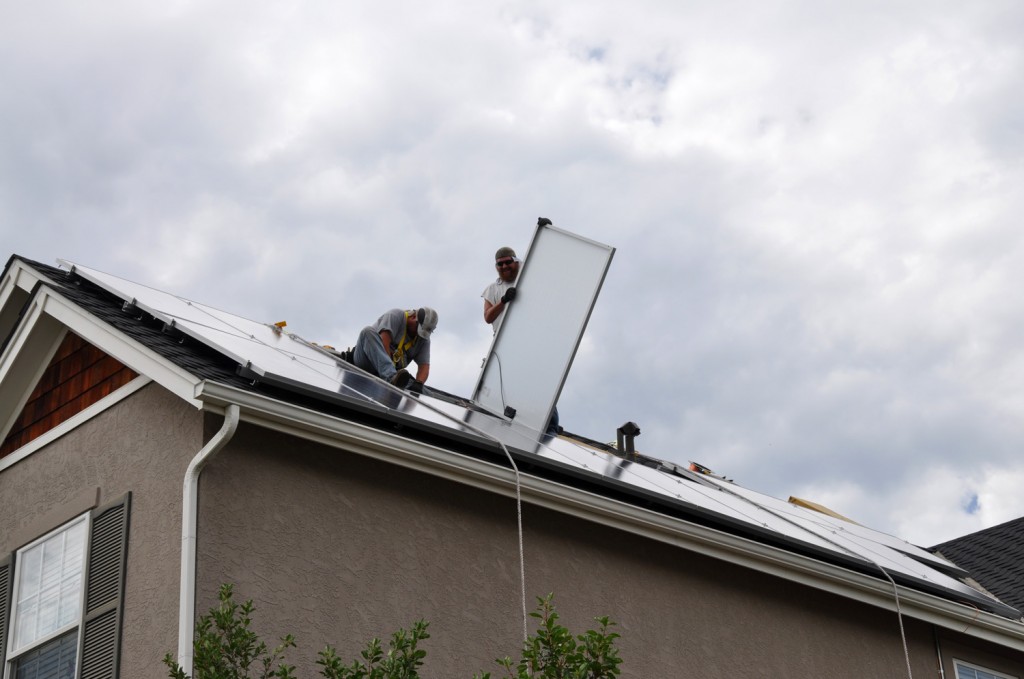
Our (or technically Sunrun’s) solar panels during installation on July 13, 2010. The U.S. Energy Information Administration did not predict this.
The future didn’t look much like we thought it would.
I’m not talking about flying cars or colonies on Mars – although those two are looking promising at the moment.
In 2006, the U.S. Energy Information Administration laid out its predictions for renewable energy installations a decade hence. Its prognosticators extrapolated out the curves of past performance and divined 0.8 gigawatts of U.S. solar capacity by 2016. With wind, they were a bit more bullish, predicting 17 gigawatts of turbines spinning away. (A gigawatt is roughly what a big coal-fired power plant can produce, capacity factors aside.)
They were off by just a touch.
As InsideClimateNews reported yesterday, the United States had an installed solar capacity of about 37 gigawatts last year, about 46 times higher than the EIA had guessed. This country installed 14 gigawatts of solar in 2016 alone.
Solar grew from a tiny base. Wind had a better foothold in 2006, so the projection wasn’t quite as far off: the 82 gigawatts of turbines in the United States was merely five times higher than the EIA had estimated.
The 45 percent plunge in coal-fired generation wasn’t on their radar, either.
This isn’t about assailing the EIA. Who could have predicted the fracking boom, which turned utilities off to coal and on to natural gas? Or the rise of Solar City, Sunrun and other solar-panel leasing programs. The EIA had no more clue than I did that I’d have Sunrun panels on my roof as of 2010, or that Chinese manufacturers would come to produce panels so cheaply.
Perhaps proposed tariffs on those panels with grind the progress to a halt. Or, perhaps, Tesla’s Nevada battery gigafactory and the proliferation of electrified, self-driving cars will put panels on many more rooftops (and high-voltage plugs in many more garages), and stoking the trend further beyond the imaginations of actuarial bureaucrats. With regime change in 2020, national politics could become a tailwind again. Elon Musk, in addition to vastly increasing the odds of a future with humans on Mars, is betting big on batteries, electric cars and, yes, solar panels – Solar City’s 2016 merger with Tesla wasn’t on the EIA radar, either. Of course, Tesla itself didn’t mass-produce a car until 2008.
The lesson isn’t that Elon Musk’s business hunches should necessarily supplant the products of EIA forecasters. It’s that long-term forecasting, especially when it comes to something as complex as energy markets, is fraught. So there’s reason for skepticism – and, as the last decade’s numbers show, for optimism, too.
